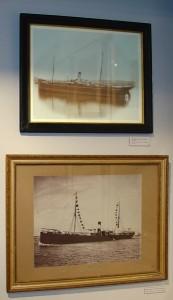After the War of Independence, the liberated people from Galaxidi returned to their burnt down and ruined homes. On January 19, 1830, the Special  Delegate of the district of Salona (today Amfissa), K. Metaxas, reported to the Governor I. Kapodistrias:
Delegate of the district of Salona (today Amfissa), K. Metaxas, reported to the Governor I. Kapodistrias:
“…the town of Galaxidi… is completely demolished… there are 650 families comprising 2815 souls… forty of them are shipbuilders, 30 builders… Galaxidians are all seafarers, they make a living as either sailors or merchants on their small merchant fleet…They have 34 class A ships and 73 class B…”
Hard workers and creative, the inhabitants of Galaxidi rebuilt their town. They set up shipyards in the two harbors and started up their naval and merchant activities again.
During the 1870’s the wind power driven merchant marine reached its peak, and Galaxidi became the second nautical center of Greece, after Syros, having 100 class A and 250 class B sailing ships. Every year 15-20 ships were launched, most of them built in Galaxidi; they sailed in the Mediterranean, the Black Sea and even across the Atlantic. The maritime community, then with six thousand members, built up the town to its present form.
With the arrival of steam-powered ships, Galaxidi did not adjust to the new technology and started to decline at a rapid rate.
Steamships (Photo of steamships from the Nautical Museum of Galaxidi)
The era of the large Galaxidi sailing ships came to an end during the last decade of the 19th century, when steam power took over. Less ships were built and decline set in at a rapid rate.
Already from 1883, some Galaxidians tried to adjust to the new technology and bought steamships. The higher cost, the difficulty in accepting the idea of partnership rather than being independent ship owners and captains, absolute masters of their ships, second only to God, and the new sea-trade routes that brought ships away from Galaxidi were the reasons why Galaxidi ceased to command a presence in the Greek merchant marine. Nevertheless, many Galaxidians are still employed on Greek-owned ships, thus the seafaring tradition continues.



